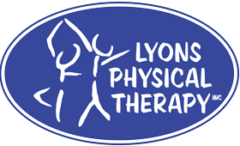Running is a great form of exercise, recreation, and sports participation for almost any age group. Plus, the only equipment needed is a pair of running shoes! Whether alone or with a team, running with correct form can enhance physical fitness, coordination, sense of accomplishment and physical development.
One common myth regarding running is that it’s bad on the knees. If someone has a family history of arthritis, is overweight, or doesn’t have full hip, knee or ankle range of movement then running probably isn’t the optimal physical activity. But otherwise, running does not contribute to ‘bad knees.’ However, running with poor form or when you’re experiencing pain can lead to injury. If you’re experiencing any pain while running, shortness of breath, stiffness, or headaches during or after running then it is time to evaluate your running technique. To prevent these symptoms from arising, follow these key points to keep injury free during running:
1) Maintain an upright and relaxed position; don’t lean forward as you run. Postural awareness throughout the day, not just when you are exercising, will lead to muscle efficiency and an increase in speed and power.
2) Supplement running with strength training, especially muscles in the hips and core. All muscles that propel the body forwards attach directly or indirectly to the spine and pelvis.
3) Maintain your flexibility: When muscles can lengthen fully, they will have more power and control when they contract.
4) Run in proper shoes w/ the individualized, appropriate support & fit. Don’t wear your favorite shoes that are older than one year.
5) If you have pain during or after running, STOP and seek advice on what could be causing the problem. Don’t keep running, hoping the pain with go away.
6) Set safe, achievable goals and advance slowly & cautiously
A person’s ability to run for years without injury requires a complex interaction of postural awareness, strength, stability and mobility. Devoting time to training each of these components can be the key to saving your knees, and lead to success in developing a fast, efficient and powerful running form.
